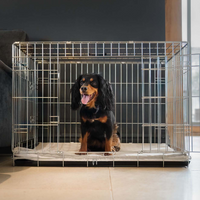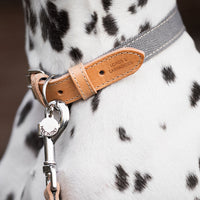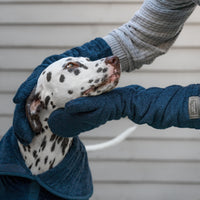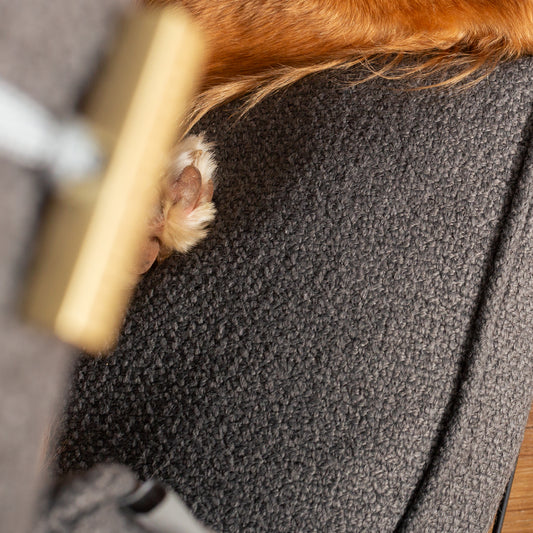If you've ever witnessed your beloved furry friend experiencing night terrors, you know how distressing it can be. Just like humans, dogs can have nightmares too. Night terrors in dogs can leave both pets and owners feeling helpless and concerned.In this article, we'll delve into the world of dog night terrors, exploring what they are, why they occur, how to identify the symptoms, and most importantly, what you can do to help your furry friend. So, let's jump right in!
What Are Dog Night Terrors?
Dog night terrors are episodes of intense fear or anxiety that occur during sleep. They are also known as sleep terrors or parasomnias, and are characterised by intense fear, anxiety, and agitation during sleep. These episodes are often accompanied by physical manifestations such as trembling, whimpering, or even trying to escape from the perceived threat. Although we can't fully understand what our dogs experience during these episodes, it's important to remember that night terrors can be distressing for both the dog and their owner. Night terrors are different from regular nightmares, as dogs experiencing night terrors are not fully awake and may not be aware of their surroundings.

Can Dogs Have Night Terrors?
Yes, dogs can indeed have night terrors. While it is difficult to determine the exact content of their dreams or nightmares, research suggests that dogs may experience similar dream patterns to humans. It's important to note that the exact causes and triggers of dog night terrors are still not fully understood by scientists. However, it is believed that factors such as anxiety, past traumas, or certain medications may contribute to these episodes.
Why Do Dogs Have Night Terrors?
Understanding the underlying causes of dog night terrors is crucial in addressing the issue effectively. Several factors can contribute to these episodes, including:
Anxiety or stress
Dogs with a history of anxiety or fear-based behaviours may be more prone to night terrors. Traumatic experiences or a lack of socialisation can contribute to these anxieties.
Medications
Certain medications can potentially disrupt a dog's sleep pattern and trigger night terrors
Medical conditions
Certain medical conditions, such as epilepsy or sleep disorders, can trigger night terrors in dogs. It is important to consult with a veterinarian to rule out any underlying health issues
Age
Puppies and older dogs are more likely to experience night terrors due to the developmental stages or age-related health issues
Environmental factors
Changes in the dog's environment, such as moving to a new home or exposure to loud noises, can contribute to night terrors. Dogs are creatures of habit and disruptions to their routine can sometimes cause stress and anxiety.
Dog Night Terror Symptoms
Identifying the symptoms of night terrors in dogs is crucial in order to provide the necessary care and support. Here are some signs to look out for:
- Rapid eye movement (REM) under closed eyelids
- Intense vocalisation: Dogs experiencing night terrors may let out loud and distressing vocalisations such as growls, barks, whimpers, or howls
- Uncontrolled movements: During night terrors, dogs may exhibit sudden and uncontrolled movements like thrashing their legs & body or trembling/shaking
- Dilated pupils and rapid breathing: Dogs in the midst of a night terror may have dilated pupils and rapid, shallow breathing.
- Disorientation upon awakening: Unlike nightmares where dogs wake up fully aware, dogs with night terrors may appear disoriented and confused upon waking up.

Is My Dog Having Night Terrors Or Seizures? What’s The Difference?
Differentiating between night terrors and seizures is essential, as the treatment approaches may vary. Here are some key distinctions:
Night terrors: Dogs experiencing night terrors may appear partially awake, exhibit intense fear or anxiety, and display physical symptoms like shaking or vocalising. They are usually responsive to external stimuli.
Seizures: During a seizure, dogs are generally unaware of their surroundings, may lose control of their bodily functions, and exhibit repetitive or convulsive movements. They are less likely to respond to external stimuli.
If you're unsure whether your dog is having night terrors or seizures, it's best to consult your veterinarian for a proper diagnosis and treatment
What To Do If My Dog Has Night Terrors
Although you may feel helpless when your dog experiences night terrors, there are several strategies you can implement to help alleviate their distress:
1. Create a safe and comforting environment
Provide a designated sleeping area that is quiet and free from distractions. Use a comfortable dog bed and consider using familiar scents, such as a blanket with your scent or calming aromatherapy products.

2. Establish a consistent routine
Dogs thrive on routine, so establish a regular sleep schedule and stick to it. Incorporate calming activities before bedtime, such as gentle play or a relaxing massage.
3. Exercise and mental stimulation
Engage your dog in regular physical exercise to help reduce anxiety and promote better sleep. Provide mental stimulation through interactive toys or puzzle games to tire their mind as well.

4. Use positive reinforcement and rewards
Reward calm behaviour and reinforce positive associations with bedtime routines. Consider using relaxation techniques, such as gentle massage or music designed for dogs, to help them unwind before sleep.
5. Seek professional help and advice
If your dog's night terrors persist or worsen, it is important to consult with a veterinarian or a veterinary behaviourist. They can assess your dog's specific situation and provide tailored guidance and, if necessary, recommend appropriate treatments or therapies.
Should You Wake a Dog Up From a Night Terror?
In most cases, it is not recommended to wake a dog up from a night terror. Abruptly waking them can startle and confuse them, prolonging the episode. Instead, create a soothing environment by dimming the lights and minimising any loud noises. Your dog can pick up on your emotions, so it's important to remain calm and composed during an episode whilst it runs its course. Once the episode has passed, gently reassure your dog with soothing words and gentle strokes. This can help them feel safe and secure.

When to See a Vet For Dog Nightmares
If your dog's night terrors persist, worsen over time, or significantly impact their quality of life, it's important to consult with your veterinarian. They can conduct a thorough examination, rule out any underlying medical conditions, and provide guidance on appropriate treatment options.
While dog night terrors can be a distressing experience, there are steps you can take to help your furry friend. By understanding the causes, recognising the symptoms, and implementing appropriate strategies, you can provide comfort and support to your dog during these episodes. Remember, each dog is unique, so it may take time to find the most effective solution. If you're concerned about your dog's night terrors or need further guidance, consult with a veterinarian for professional advice. With patience, love, and proper care, you can help your dog navigate through their night terrors and ensure their well-being.






































































































